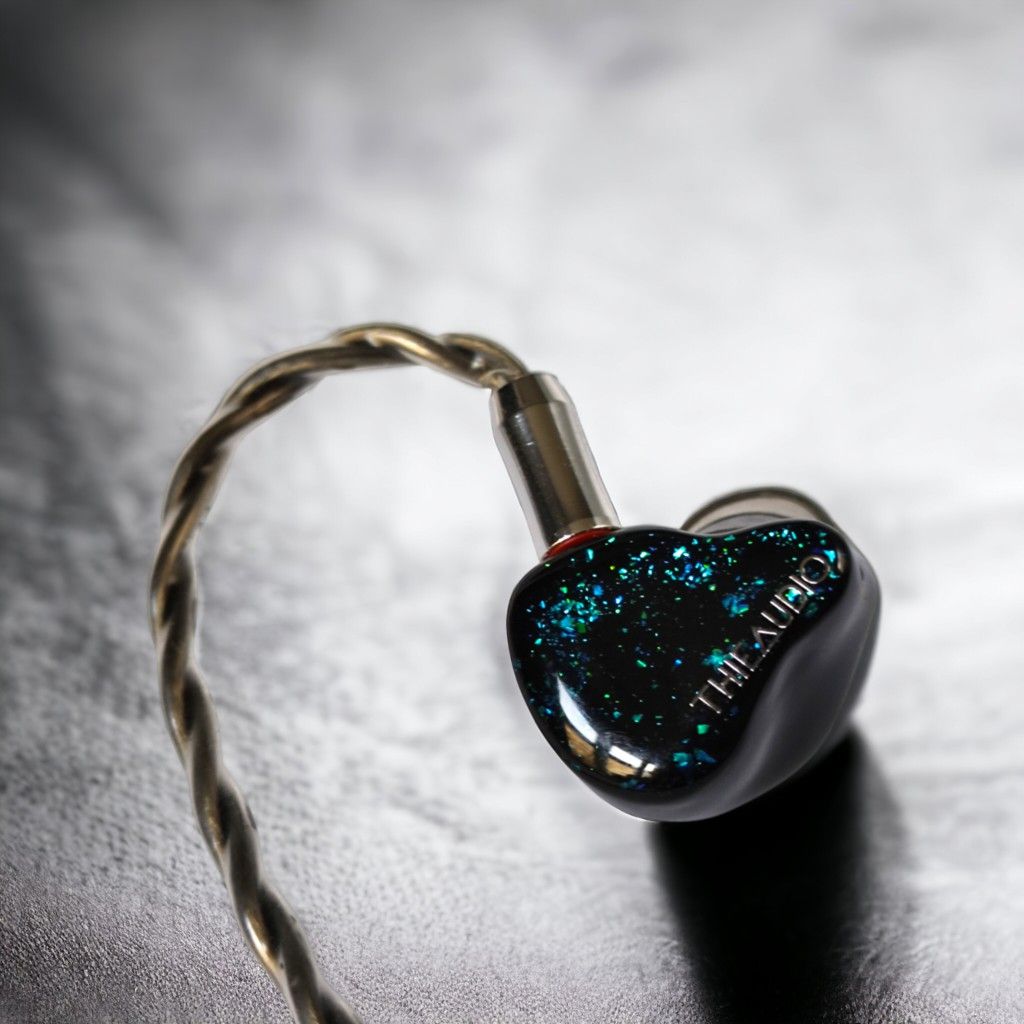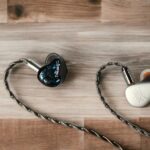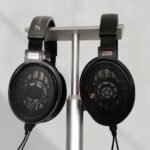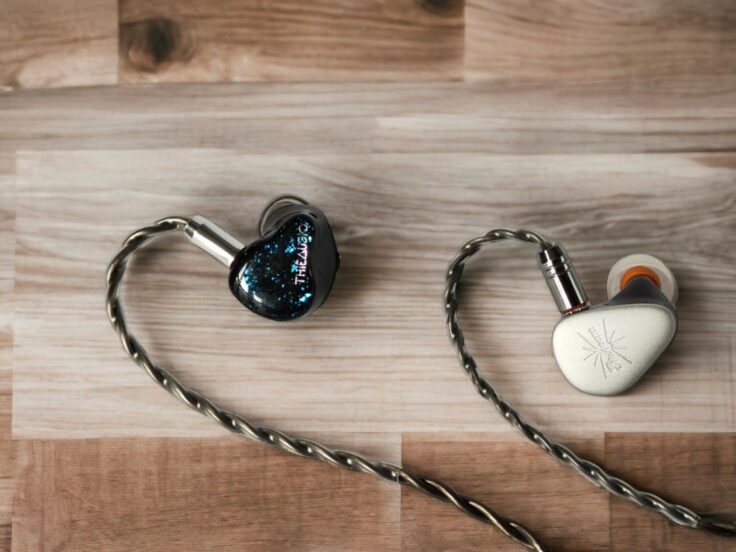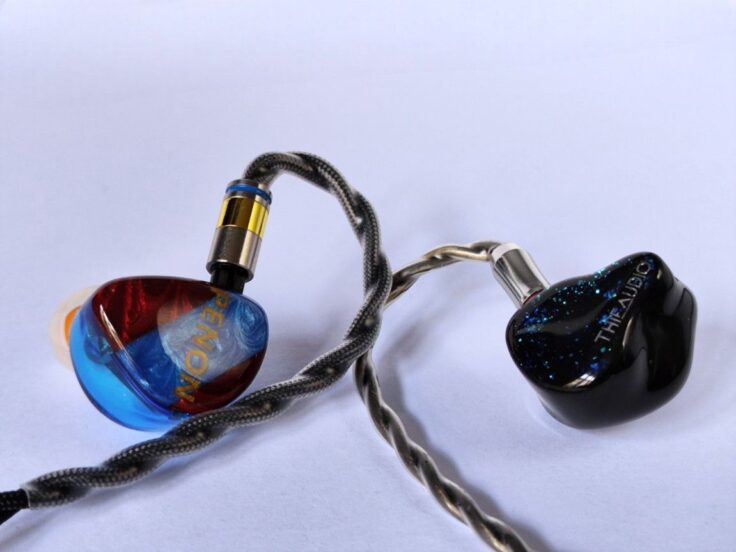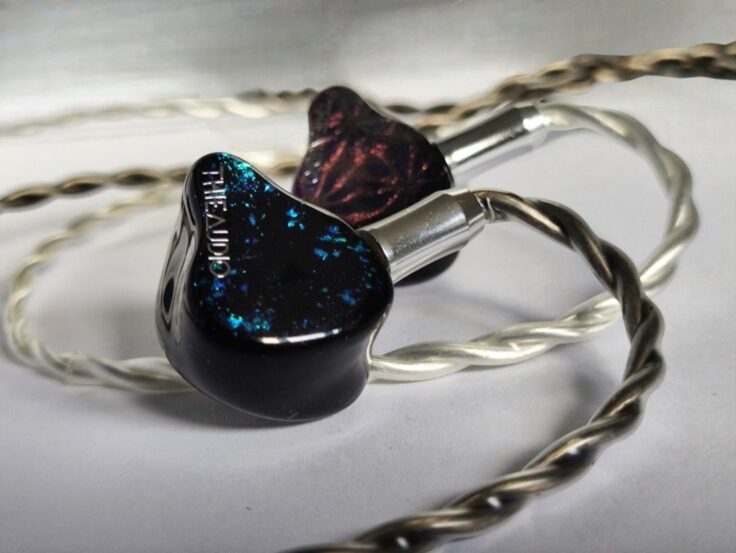The Thieaudio Hype 4 is a premium in-ear monitor (IEM) priced at $399, positioned in the middle of Thieaudio’s Hype series. “Hype” stands for “Hybrid Performance,” reflecting its hybrid driver setup that combines balanced armature and dynamic drivers.
The Hype 4 offers a well-rounded sound signature with deep bass, clear mids, and present and delicate treble, making it versatile for various music genres. It slots between the $299 Hype 2 and the $899 Hype 10, offering high-quality performance at a competitive price point. The number in the naming of the Hype models reflects how many balanced armature drivers there are per side.
All the Hype IEMs are made of medical-grade resin and look basically the same, with different decor and some colour options. The big difference lies in the driver setup.
The Hype 4 has the following driver configuration: For the bass, there are two 10mm composite diaphragm drivers. These are arranged in a configuration utilizing an isobaric chamber to secure constant pressure and an even frequency response. Thieaudio calls this technology IMPACT². For the midrange, the Hype 4 uses two Sonion 26A balanced armature drivers. The treble is handled by two Sonion E50 series “Hummingbird” balanced armature ultra-tweeter drivers.
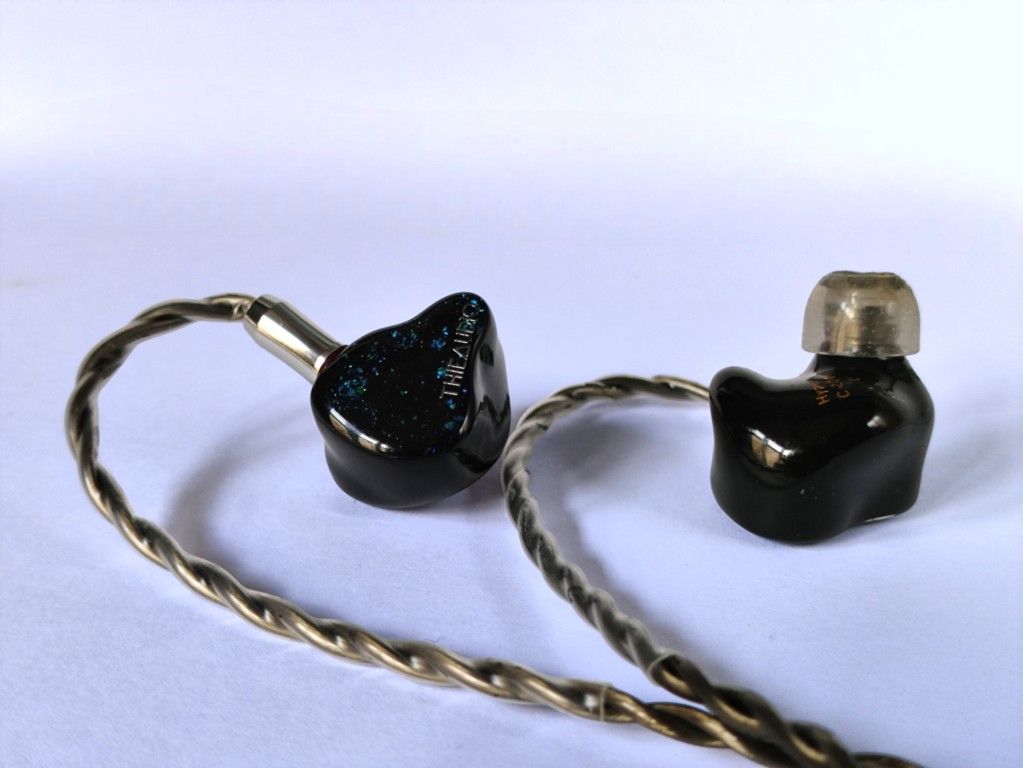
THIEAUDIO HYPE 4 SPECIFICATIONS
- Drivers: 10mm dual diaphragm dynamic driver + 2 x Sonion 26A and 2 x Sonion E50 balanced armature drivers
- Impedance: 17 Ohm
- Sensitivity: 105 dB (±1dB) @1kHz
- Frequency Response Range: 10Hz-22kHz
- Nozzle Diameter: 6.2mm
- Inner Nozzle Diameter: 5.0mm
- Earphone connectors: 0.78mm dual-pin
- Cable termination: 3.5mm jack
- Cable length: 1.2 m
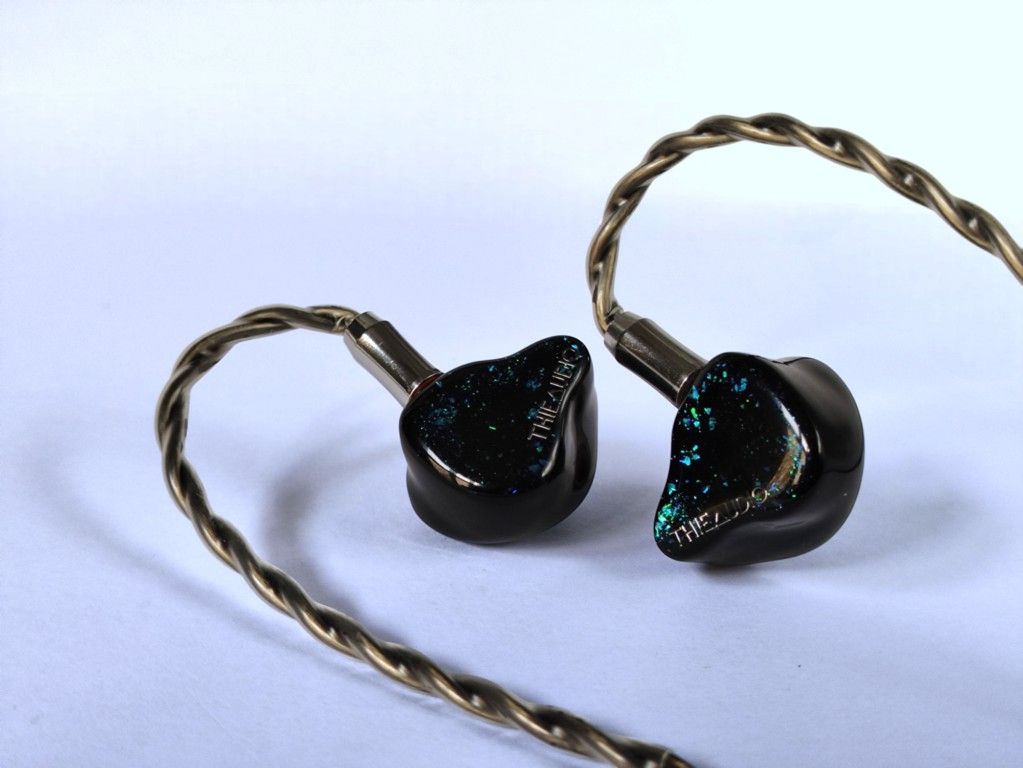
BUILD AND COMFORT
The Hype 4 is lightweight and comfortable. It’s neither too small nor too large. However, the nozzles are larger in diameter compared to the average IEM, so I had to experiment a bit to find a good fit with the ear tips. Ultimately, the large nozzle size led me to use smaller tips than usual. While I typically use medium-sized tips, the best fit in this case was medium-small, specifically the Azla SednaEarFit Xelastec MS. The cable is also excellent—not too thin or too thick, with just the right amount of friction.
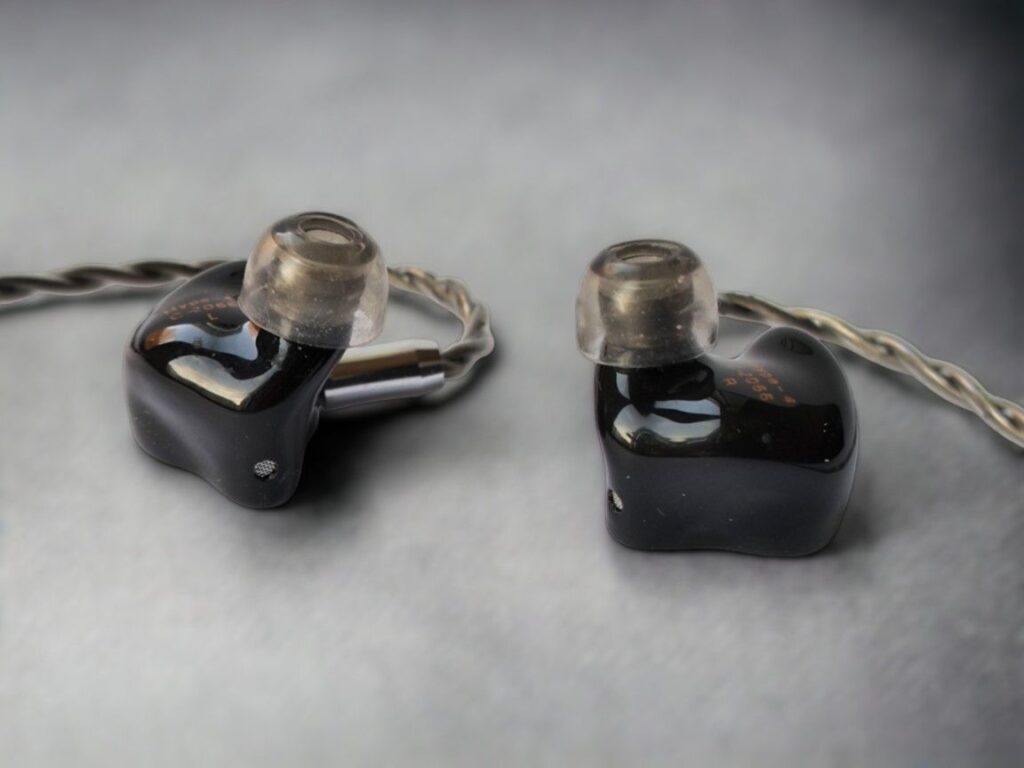
LISTENING IMPRESSIONS
Associated equipment: Topping A90 amplifier with the RME ADI-2 DAC FS as source. I used Azla Xelastec ear tips.
Modul 55 by Nik Bärtsch
This jazz quartet sounds great. The bass is full, the mids have great timbre, and the treble is clear without being too bright. There’s loads of detail.
Georgia Lee by Tom Waits
The soundstage is large and the imaging excellent. There’s a good sense of depth. Waits’ vocals are neutral sounding with great nuance, not overly warm nor too dry. Detail level in general is very high; all the ambient sounds are clear and articulate.
Graceful Touch by Tord Gustavsen Trio
Again, a very spacious presentation with great imaging and a rather neutral-sounding delivery. The bass is solid, the piano is clear and crisp.
Rambling Man by Laura Marling
The instrument separation is great, with well-defined spacing and excellent imaging. The female vocals come through clean and clear, rich sounding with lots of micro-details, as does the acoustic guitar. When the full band joins in, each instrument remains distinct and easy to follow.
Sunrise by Norah Jones
The female vocals are crystal clear and take center stage. Instrument separation is very good, and the detail level is high.
Black Crow by Cassandra Wilson
There is a lot going on in this track, and the Hype 4 reveals it all. There’s a great sense of spaciousness and image depth. The female vocals are clear and nuanced with a neutral presence.
Escape Route by Boris Blank
Once again, the delivery is impressively spacious and detailed, with excellent depth and precise instrument separation. The tonality is well-balanced, featuring a slightly rich bass and a crisp, vibrant trumpet.
Vicarious by Tool
It’s massive, it’s tight, and it’s hyper-detailed. The Hype 4 definitely can play heavy metal.
Bored by Deftones
Another metal track, and once again, an impressive performance. The delivery is dynamic and detailed, with excellent tonality.
Maple Noise by Greene Serene
The Hype 4 brings this dynamic jazz piece to life with remarkable energy. The soundstage and imaging are excellent, the trumpet shines with crisp clarity, and the percussion is incredibly snappy, with a great sense of reverb.
Summer 3 Vivaldi Recomposed by Max Richter
The tonality and timbre are spot on. Not too crisp, not too warm, not too dry. There is a wealth of nuances and details, and the soundstage is large.
Brahms’ Symphony Nom 2 III by Paavo Järvi
The kettledrums have a massive punch. There’s detail in the background I have not noticed before. The soundstage and imaging is superb. Again, an excellent, well-balanced tonality.
Spontanious Compositorius by Thomas Aagergard
The bell-focused percussion is rendered with great nuance, and the detail level is impressive, but the treble is not especially polite in quantity. The bass is solid but not overpowering. The saxophone is crisp and clear with a great sense of texture.
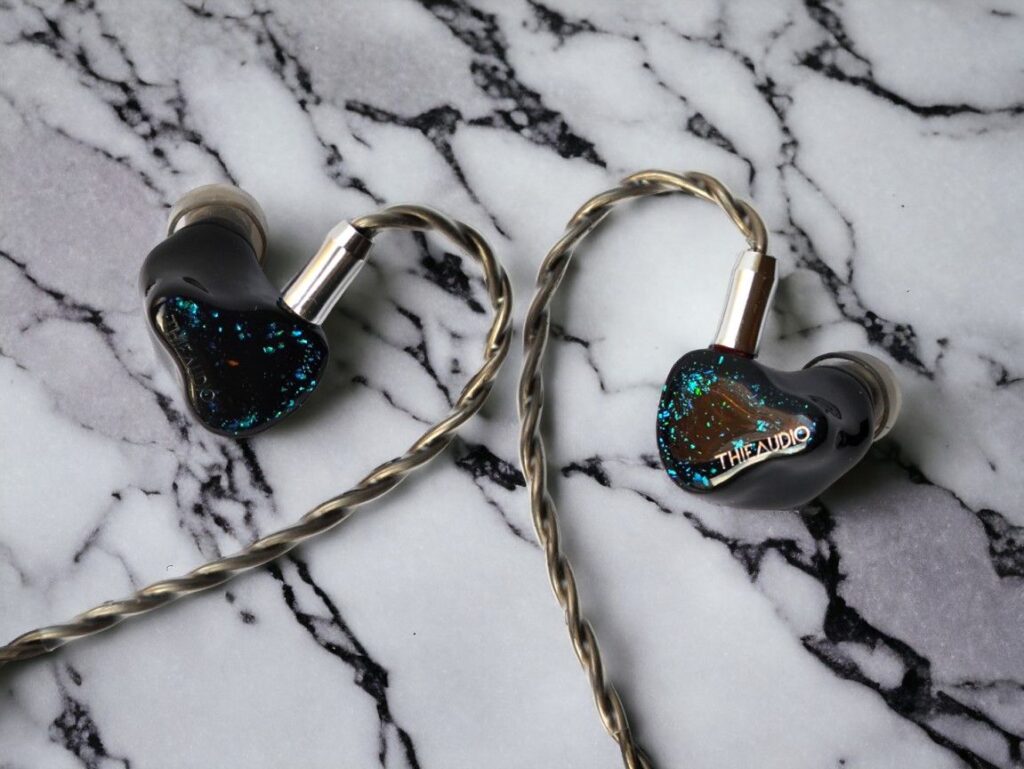
WRAPPING IT UP
Sound Signature
The Hype 4 offers a well-balanced and natural sound signature. The bass is rich and full without being overpowering, the midrange is clear and prominent, and the treble clear yet smooth, blending seamlessly with the overall presentation.
Treble
The treble is beautifully balanced, featuring a delicate, liquid quality that delivers detail with a touch of smoothness.
Midrange
The midrange is very natural and organic; it has a good presence, and the voices and instruments really come through.
Bass
The bass isn’t modest, but it is well controlled and of high quality. I find the amount of bass presence to be very natural sounding and satisfying.
Soundstage and Imaging
The Hype 4 offers a large soundstage for an IEM, with excellent imaging. There is distinct space between instruments, and the presentation has a pleasing sense of depth.
Detail, Dynamics, and Timbre
I find the detail level to be very high with the Hype 4. Further, the detail is presented with a delicate, organic touch all the way through the frequency spectrum. The Hype 4 is also very strong in terms of dynamics, especially in the midrange and bass. In terms of timbre and tonality, I find it to sound warm and natural, rendering detail without sharp edges while still remaining clear.
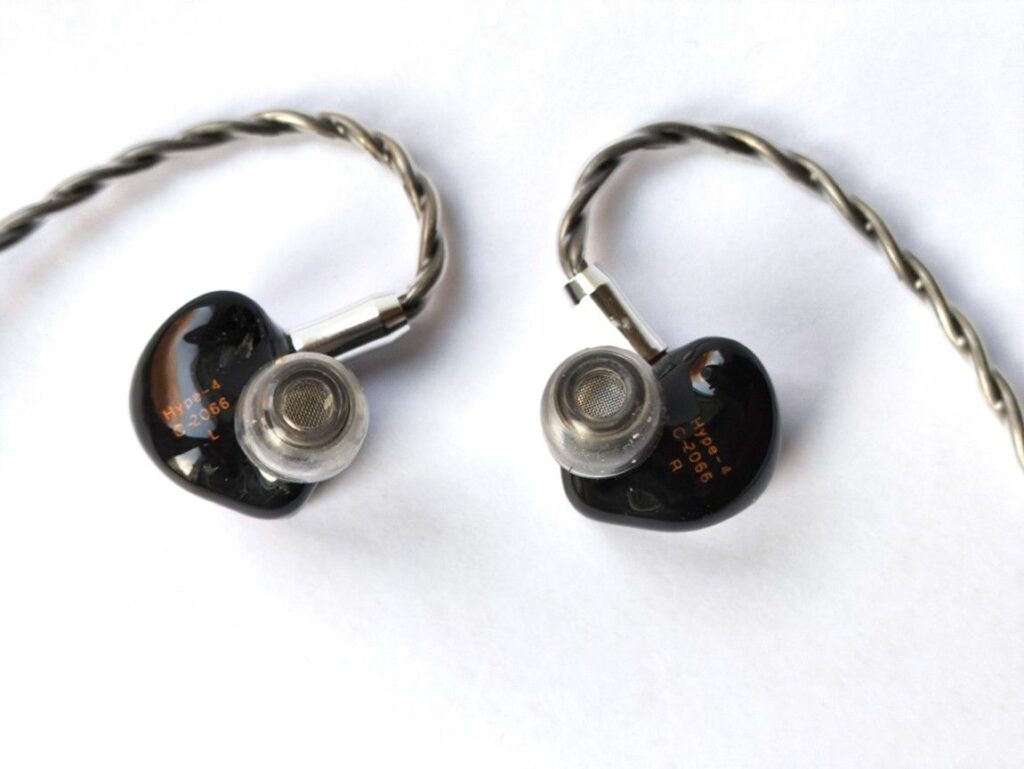
COMPARISONS
Associated equipment: Topping A90 amplifier with the RME ADI-2 DAC FS as the source. I used Azla Xelastec ear tips on the Hype 4 and 2, SpinFit CP145 on the Penon 10th, and Quintet.
PENON 10th ANNIVERSARY vs. HYPE 4
Penon Audio made a special release celebrating their 10th anniversary. The 10th Anniversary IEM features a 3D-printed shell made from medical-grade resin—very similar to the construction of the Hype 4.
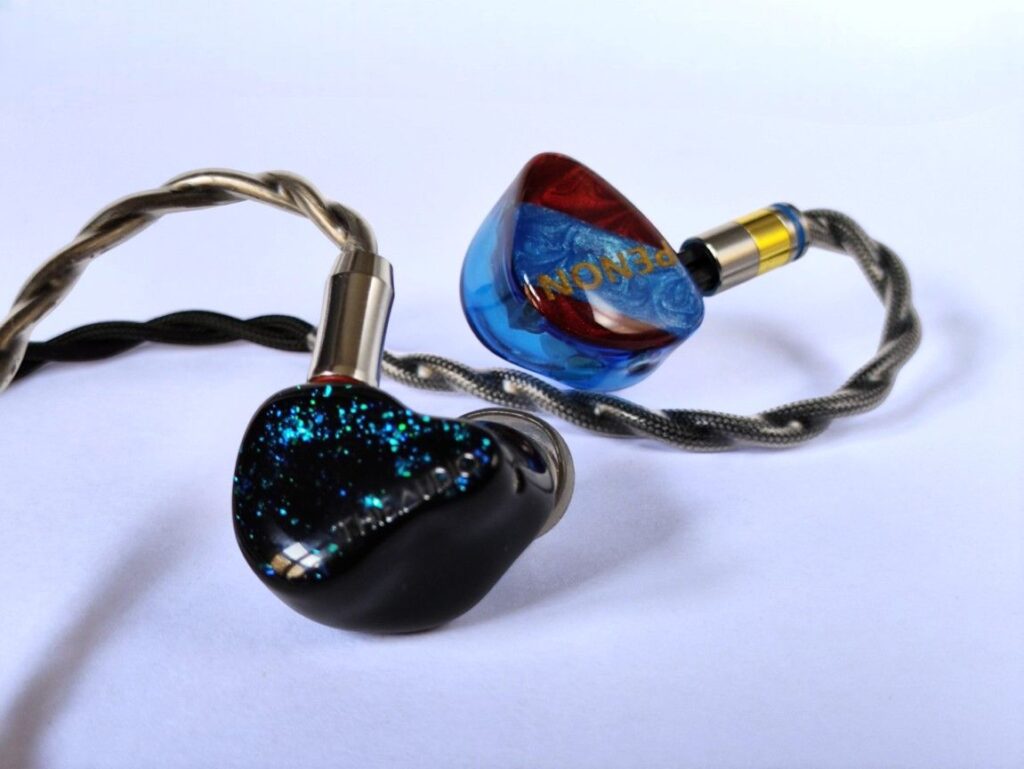
The Penon 10th and the Hype 4 share some similarities in driver configuration, but they differ significantly in one area: the Penon 10th includes electrostatic drivers. Here’s how the Penon 10th’s driver setup breaks down: Two Sonion electrostatic drivers dedicated to ultra-high frequencies; one Knowles balanced armature driver for the treble; one Sonion balanced armature driver for the midrange; and two 6mm crystalline-plated biofilm dynamic drivers for the bass.
At $499, the Penon 10th Anniversary is easily one of my favorite IEMs below the $500 mark. The Hype 4 comes remarkably close to matching the 10th’s many strengths and even surpasses it in bass performance. Both models share a similarly tuned, well-balanced sound signature and deliver a natural tonality. They each feature a spacious soundstage and excellent imaging and are truly great IEMs.
My full comparison review of the Penon 10th Anniversary and the Hype 4 can be found here.
THIEAUDIO HYPE 2 vs. HYPE 4
The Hype 2 is the “smaller” sibling of the Hype 4, and they have a lot in common. Most apparent is the identically shaped housings, only separated by decorative elements. The primary difference between them is that they use different types of balanced armature drivers, and that the Hype 2 uses two balanced armature drivers instead of four, one for the midrange and one for the treble.
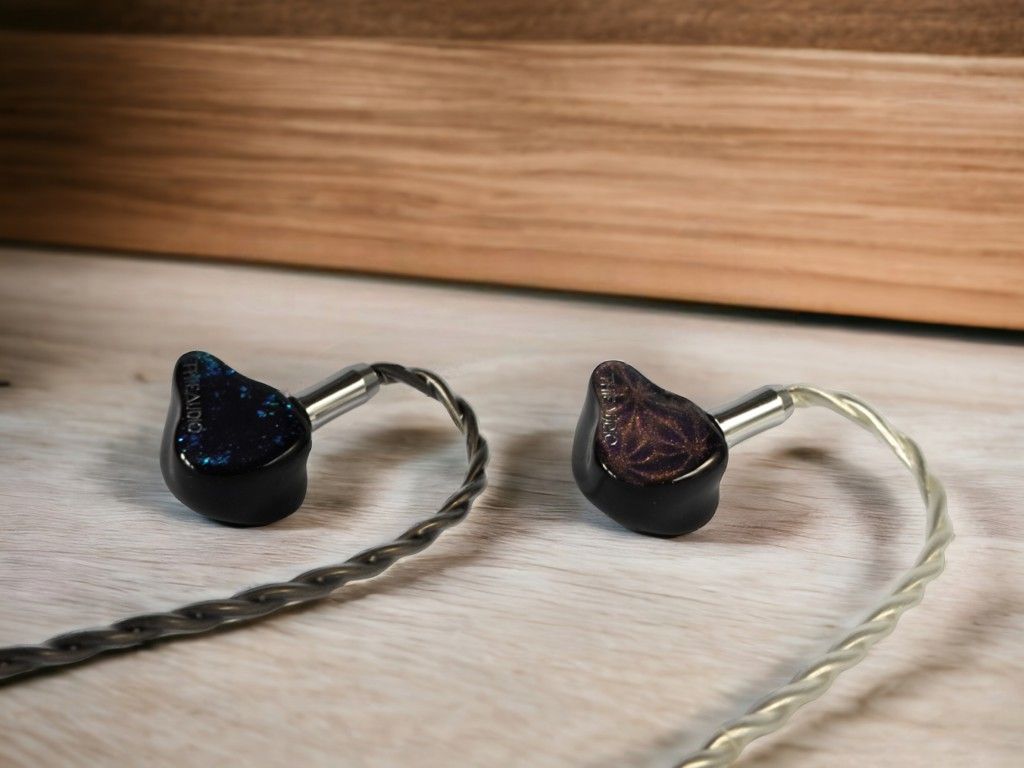
I was very enthusiastic about the Hype 2 when I reviewed it, and I still think it’s a strong performer. However, after a direct comparison with the Hype 4, I feel the Hype 4 takes performance to the next level.
To sum it up, the Hype 4 offers greater technical detail and more precise imaging. The Hype 2 has a unique, ethereal quality that gives it a lighter, airy sound, though this can sometimes make it sound a bit more diffuse. On the other hand, the Hype 4 is warmer, more focused, and delivers more bass quantity. For me, the Hype 4 justifies its higher price, yet the Hype 2 is still an excellent IEM, sharing a lot with its bigger sibling and adding that distinct, airy touch that some may prefer.
My full Hype 2 review can be found here, my full comparison of the Hype 2 and Hype 4 can be found here.
KIWI EARS QUINTET vs. HYPE 4
The Quintet is a $219 hybrid IEM, which has gained quite a lot of praise since the release in 2023. It pairs a single dynamic driver with a planar magnetic driver, two balanced armatures, and a piezoelectric bone conductor for added high-frequency resolution.
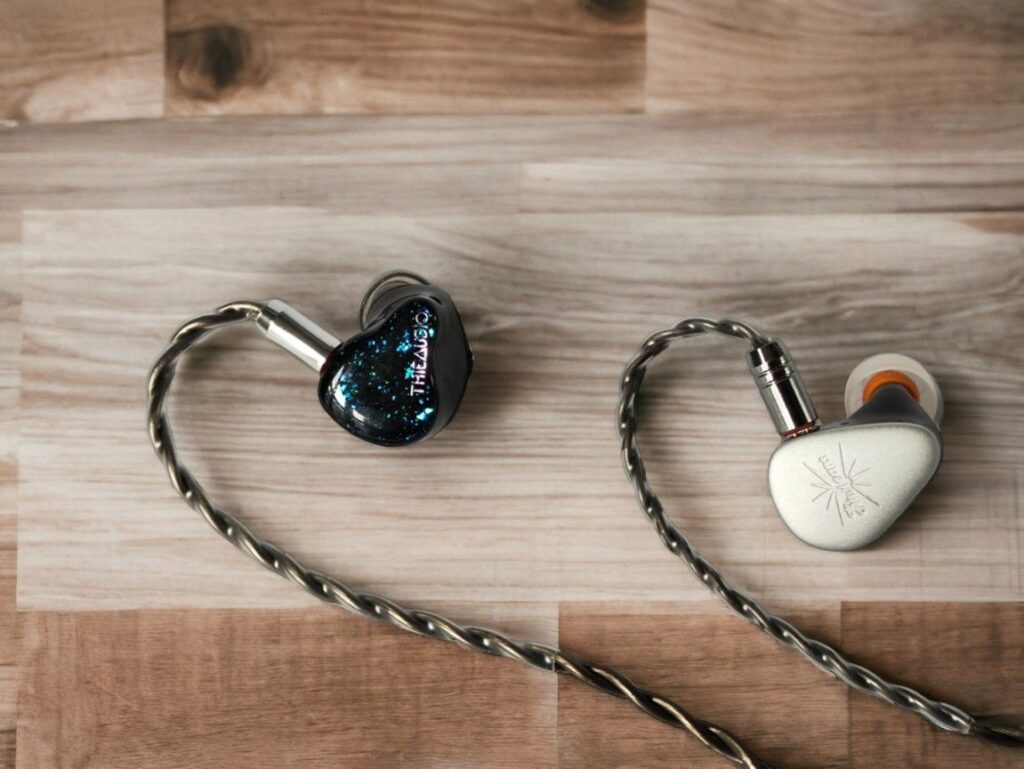
Both the Kiwi Ears Quintet and Hype 4 offer neutral sound profiles but differ in character. The Hype 4 is warmer, with fuller bass and smoother, more nuanced treble, while the Quintet is brighter and crisper. The Hype 4 delivers a more organic, resolved high end and a cleaner, more detailed midrange compared to the Quintet’s slightly dry mids. Both excel in bass, but the Hype 4 offers better quality, quantity, and a warmer tone. Imaging is also more precise with the Hype 4, though both share an open soundstage.
While the Quintet is impressive for its $219 price, the $399 Hype 4 outshines it with superior detail, organic timbre, dynamic contrast, and a natural sound. The Hype 4 justifies its higher cost, though the Quintet remains a strong contender in its price range.
My full review of the Quintet can be found here, and the full comparison of the Quintet and the Hype 4 is here.
- Linsoul: Kiwi Quintet
- Amazon: Kiwi Quintet
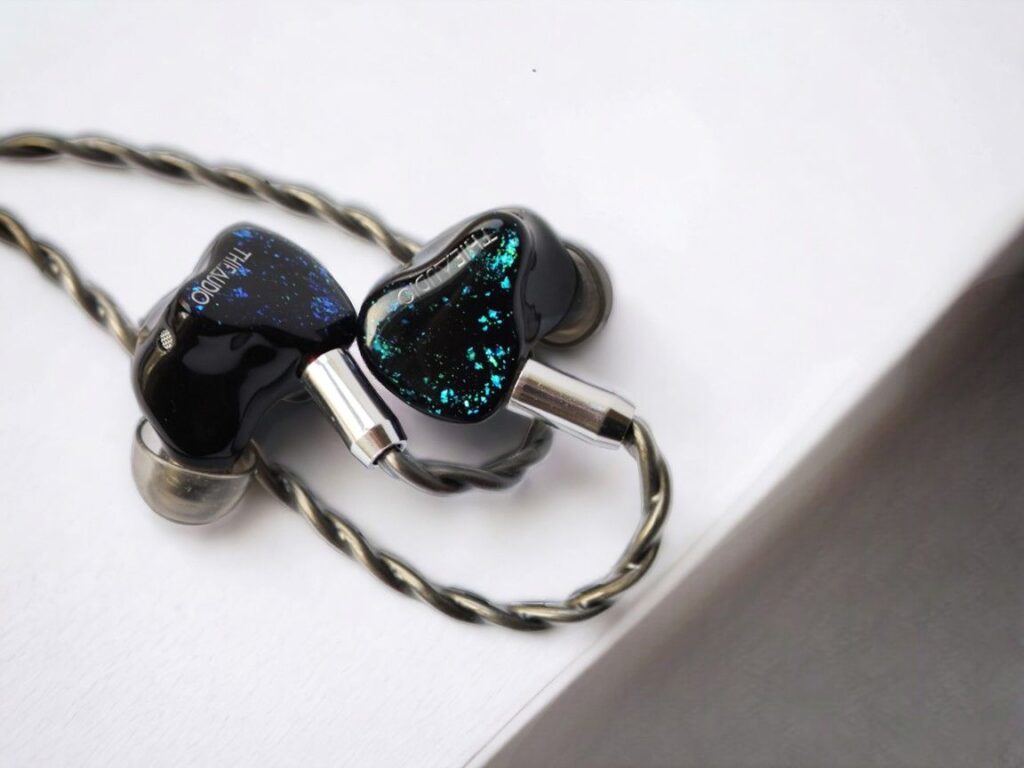
AMPLIFICATION
All listening tests so far have been conducted using my desktop setup. However, most users will likely pair the Hype 4 with portable amps and sources.
Starting with Quboz on my POCO F5 phone’s headphone output, it already sounds very good. I could easily be happy with this setup for a vacation. It stays in the 40–60% volume range. It does, however, lack the last bit of definition and separation that my desktop rig offers.
The tiny Jade/FiiO JA11 sounds better than the phone. This little thing doesn’t fail to impress me. FiiO’s KA3 sounds good but is close to max volume, even if I’ve set it in high impedance and high gain using the FiiO app.
Neither the Letshuoer DT03 nor the THX Onyx feel like an optimal match; both tend to lean towards the warmer side, and the Hype 4 sounds slightly muffled compared to when it is driven by the other options.
The xDuoo Link2 Bal works very well, and the Dragonfly Cobalt might be my favorite of the dongles; it just comes off as a bit cleaner than the rest.
The Chord Hugo (v1) sounds great with lots of power to spare and is not inferior to my desktop rig in any way.
In conclusion, the Hype 4 generally seems easy to drive but can be picky on the amplifier matching.
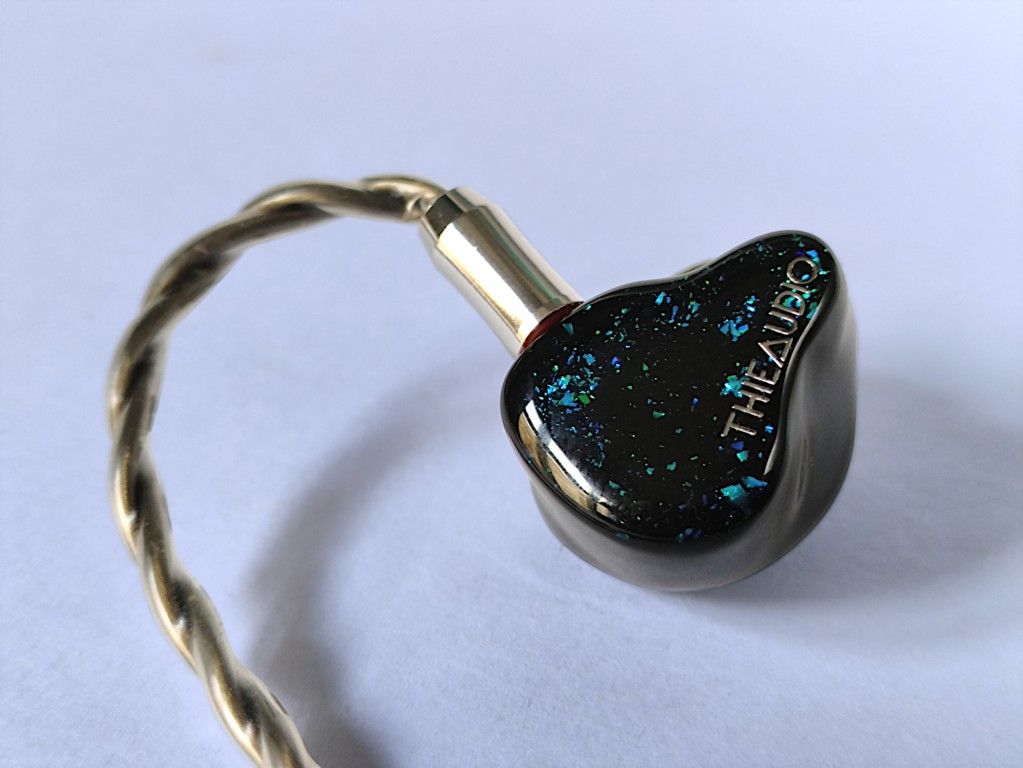
CONCLUSION
The Hype 4 offers an organic, liquid sound with excellent detail and nuance. It features impressive imaging and a wide, open soundstage. In conclusion, it provides great value and undoubtedly earns its place among my most recommended IEMs under $500.
Thanks for reading. You can support us by purchasing anything from any of our affiliate links:
Any purchase you make on Amazon or Linsoul with any of our affiliate links will give us a small provision at no cost to you.
We only get a provision for items that are not returned, so there’s no incentive for us to recommend something that’s not good.
Linsoul : Headphones, Earbuds, Wireless Earbuds, Desktop DAC/AMP, Portable DAC/AMP, Digital Audio Players,
Amazon: Headphones, IEMs, Headphone Amplifiers, Home Audio or Anything else.
.
If you enjoyed this article or other content on The Headphoneer, you might consider leaving a small donation to keep this website up and running. No donation is too small. Thanks for supporting us!
If you like our work please follow us on Instagram, Facebook and Twitter , it will help us grow. Sharing is caring 🙂


